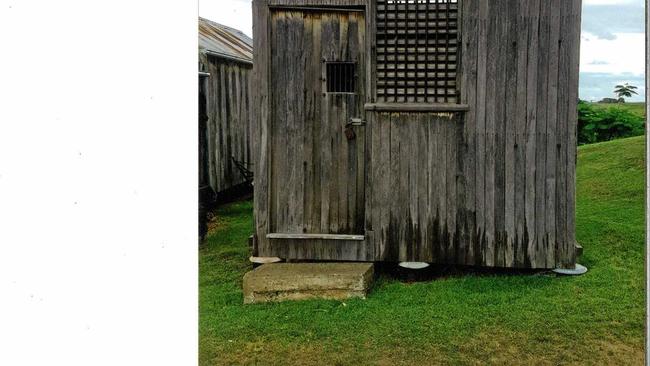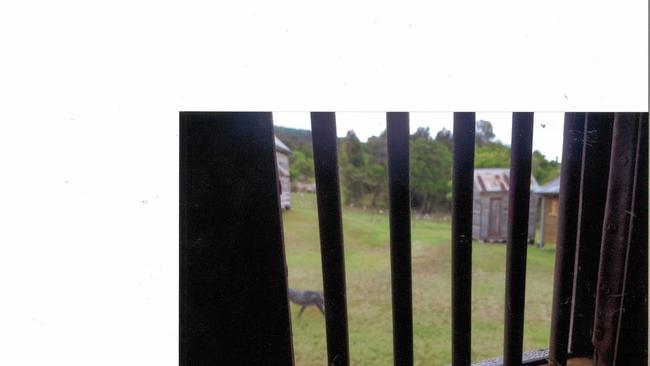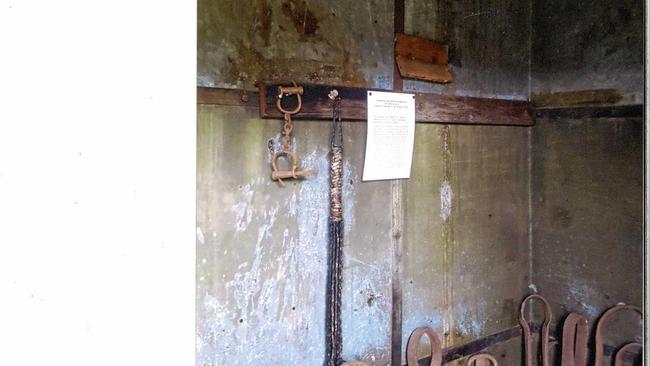If Warwick's most feared walls talked
John Telfer looks back at the history of Warwick's notorious army detention barracks

Warwick
Don't miss out on the headlines from Warwick. Followed categories will be added to My News.
MANY of Warwick's present-day residents, who live near the vacant block of land between Flitcroft, Carmody, and Quinn Sts, are unaware of its sad war-time history.
Between 1942 and 1945, the site was the Australian Army's notorious No 3 Army Detention Barracks, which could be compared to the American prison at Guantanamo Bay.
My interest in this establishment of 72 years ago, was when doing research for a book I am writing on the history of the Warwick Sub sub-branch of the Returned Soldiers, Sailors and Airmen's Imperial League of Australia, when I read in the minutes of the sub-branch meeting in April 1944, this query:
"The sub-branch has been concerned about rumours of the treatment of soldiers and riots at the army detention camp, but has no control over such happenings.”

The rumours over treatment of soldiers at the barracks turned out to be fact when on December, 7, 1943, staff members Lance-Sergeant Herbert Leschke, Sergeant William Anthony Blake AIF, and staff Sergeant John Cardigan, were charged with the ill-treatment of Private David Smith AIF.
All were court-martialled separately by the court, that comprised Lieutenant-Colonel HC Harris as president, assisted by Major JB Chapman and Captain HG Webb. Evidence heard during the trial and in Private Smith's pre-court statement included the threat from the Camp Commandant Lieutenant Shepherd that "we will make it hot for you”.
One witness, Private Kim Connolly told the court that he was one of the Garrison Battalion that supplied the Warwick Detention Barracks with guards on March 7, 1943, when Smith arrived.

Smith and other men were given kit bags and ordered to run with it.
"The next thing I saw was Smith running down the track towards the Stanthorpe Road,” he said.
"Someone called out 'he's made a break'. Shots were fired, and someone sang out 'they've got him'.”
Connolly said there was "a bit of a scuffle at the end of the drive”.
He saw Leschke and another man there. Major York, Smith's legal representative asked Connolly what happened next.
"As Smith rose, Leschke knocked him down and as they were making for the top of the drive, Cardigan kicked Smith on the legs,” Connolly replied.
Major York asked Connolly if he heard noises from the kit store where Smith was taken.
"Yes; I heard sounds of scuffling and thumping and also cries,” Connolly replied.
"The scuffling noise suggested to me that two or three were having a 'rough up'.
"I then heard sounds like someone hitting the walls, and also moans and cries - human cries. Smith was later taken to the commandant's hut.
"Blood was running down Smith's face from what appeared to be a cut over the eye. Blood also covered one of his arms.”
Other prominent court martials occurred in 1944 when staff members of the detention barracks were charged over ill-treatment of prisoners when Sergeant Phillip Schicter and Sergeant Ernest Connors were tried but acquitted over the ill-treatment of a Private PW Hackett.
When privates Sewell, Armstrong and Seymour, who had escaped from the barracks were recaptured, complaints were made that ended in charges of ill-treatment laid against Sergeants Cardigan, Redmond, Sichter and Connors.
Connors and Sichter were found guilty and fined £10 while Sergeant Sichter was also severely reprimanded on each of two charges of ill-treating soldiers.
Numerous charges were brought against staff during the period of 1942-1945 and were brought to the attention of the Federal Parliament, of which the Warwick Daily News reported on February 10, 1944.
When asked about the ill-treatment and riots at the Warwick and Grovely detention barracks, Army Minister Mr Ford said:
"Following court martials on charges of ill-treatment of soldiers at Warwick Detention Barracks, the staffing of the barracks, had been reviewed and arrangements made for a new commandant and a replacement for the staff.”
Brutality and ill-treatment of soldiers in detention barracks were not uncommon during the Second World War, as many found the discipline harsh and many inmates went in for breaches of discipline, being AWOL, insubordination, drunkenness and rioting.
Warwick experienced this in 1943 when military police prevented a riot in the town's Criterion Hotel and shots were fired into the ceiling to break it up.
Those shots are now preserved in the ceiling and have become a tourist attraction, and the public bar is named The Bullet Bar.
A possible reason for a lot of the problems was that the prison guards were members of the Volunteer Defence Corps or the Garrison Battalion that were classified as Class B men.
They were recruited between the ages of 28-55 and had to have previous military experience. They were used in detention barracks, POW and internment camps, and coastal defence.
There was also a possibility that these old 1st AIF men had little respect for conscripts, still carrying the First World War grudge.
Most of the more violent and recalcitrant prisoners were sent to Brisbane's Boggo Road Gaol during the war.
Former Chief Warden Roy Stephenson possibly summed it up accurately when he stated in his book Nor Iron Bars a Cage (Booralong) 1982:
"Rebellious behaviour in military prisons was because of the fact that Army discipline meant that harsh measures were adopted against persons collectively. Service mentality meant that if one or two stepped out of line, all were punished.”
American forces in Australia had their own problems of discipline and also were harsh on prisoners.
Riots occurred in Townsville's Army Detention Camp for African American personnel in May, 1942, when they rioted and turned the machine guns on their white officers.
The American authorities hushed this up under military censorship laws.
Another famous incident was Melbourne's "Brown Out Strangler”, when Private Eddie Leonski was hanged in Melbourne Gaol.
A rather sad incident was when one American prisoner of Filipino extraction, was captured by the Japanese in New Guinea and forced to fight against the Americans in a Japanese soldier's uniform.
When recaptured by the Americans he was tried for treason and sentenced to death.
The Americans tried to have him executed at Boggo Road Gaol, but because Queensland had abolished capital punishment many years before, the Queensland Government denied the Americans this request, so they flew him to New Guinea and hanged him there.
There is little to show on that undeveloped block in Flitcroft St, Warwick, perhaps only a concrete slab, as the ghosts of the past are really at rest.
Residents in that area reside in a long-ago part of the city's military history when more than 5000 Australian and American troops were stationed here.
This story is told to help keep alive that history, and know that the United States detention centre at Guantanamo Bay was nothing new, as Warwick's detention barracks was a much-feared place.
If the walls of those prison cells could talk, I am certain it would not be a pleasant dialogue.


